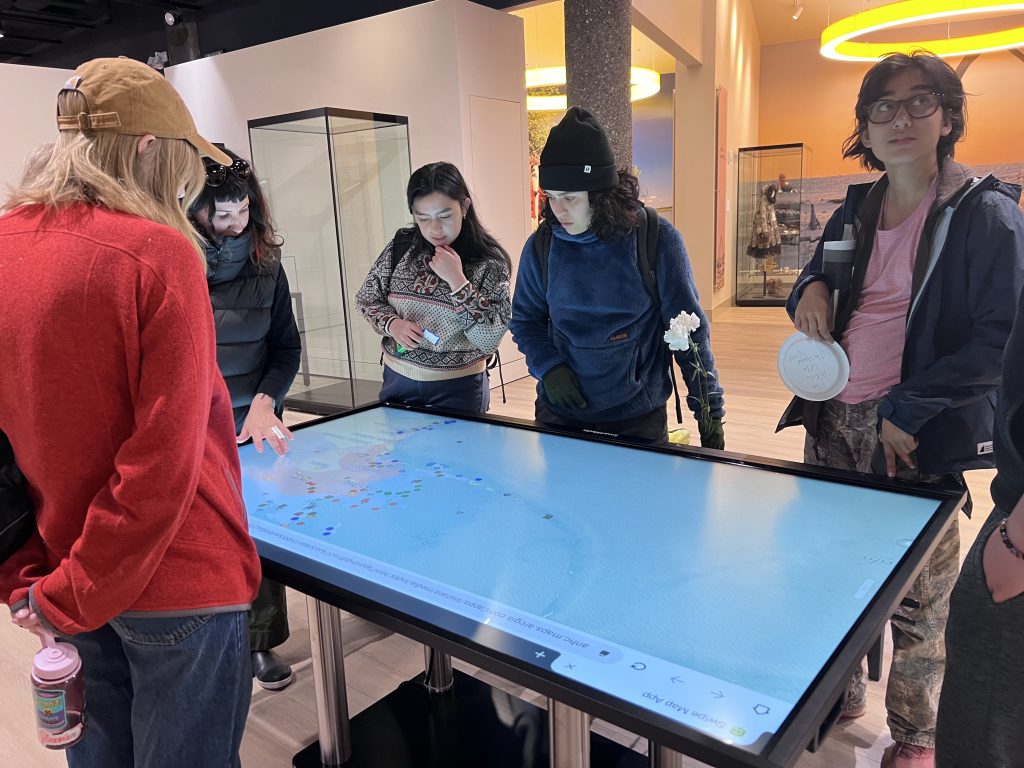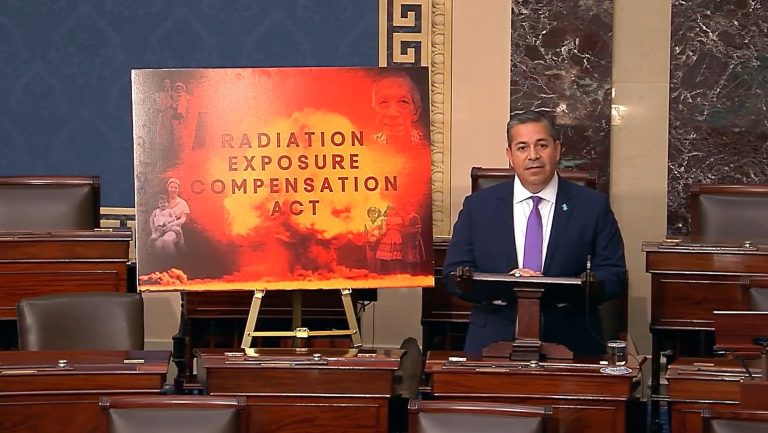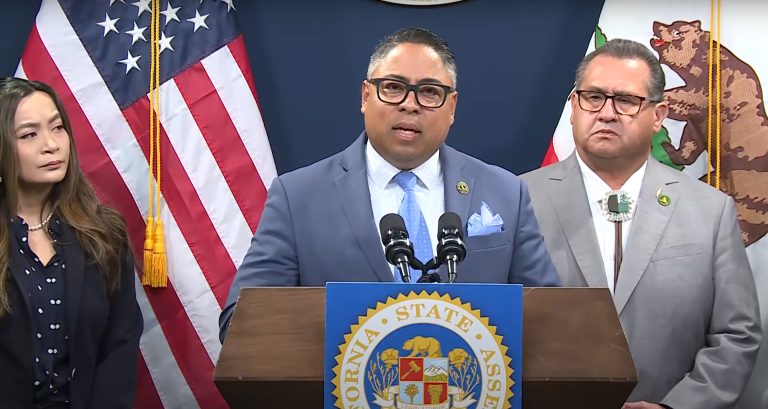Podcast: Play in new window | Download | Embed
Photo: The Alaska Native Heritage Center’s new boarding school exhibit includes an interactive map. (Rhonda McBride)
A new exhibit on Native boarding schools has opened in Anchorage at the Alaska Native Heritage Center.
As Rhonda McBride from our flagship station KNBA reports, it reveals new research into how churches and the federal government teamed up to operate schools in Alaska.
Bob Sam is a Lingít Culture Bearer from Sitka.
“This is a really difficult subject we’re talking about.”
Earlier this month, Sam opened a day-long summit on boarding schools at the Heritage Center to help Alaska Natives emotionally prepare for the exhibit and discussions that could awaken old traumas.
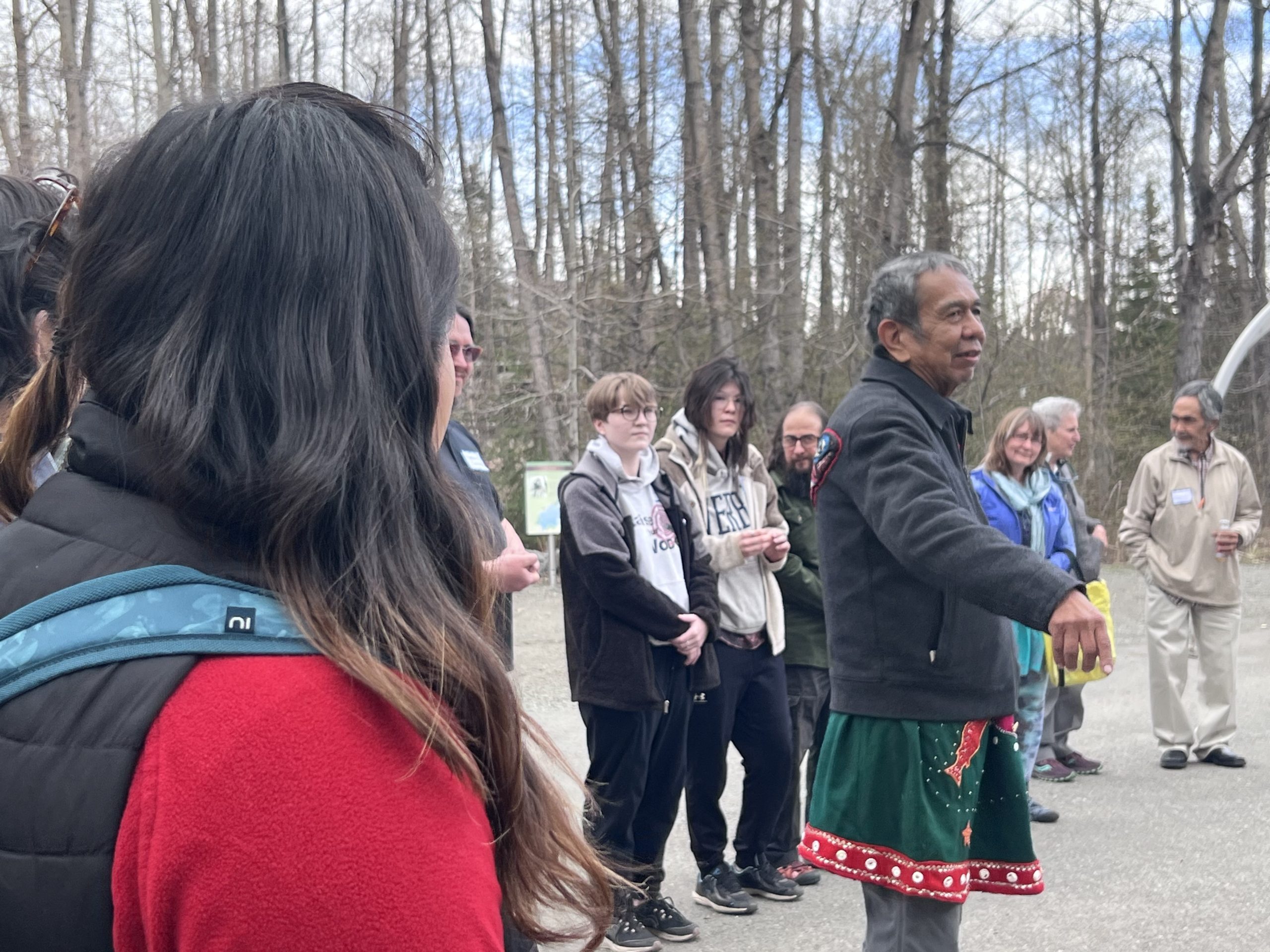
Bob Sam, a Lingít elder from Sitka, is an expert on the use of Native language and culture to heal. He led a ceremony at the end of the boarding school summit to help bring closure to the historical trauma. (Photo: Rhonda McBride)
As Sam shared an ancient story about how the Arctic wind tormented humans, he made the sound of the wind.
“The wind can be born a whisper.”
The wind never really goes away, Sam says, but once its nature is understood, it can be dealt with.

National Native News host Antonia Gonzales moderates a discussion on the new research into Alaska Native boarding schools with Emily Edenshaw, president of the Alaska Native Heritage Center, and Benjamin Jacuk, director of Indigenous research at the center. (Photo: Thea Lawton)
Emily Edenshaw, president of the Heritage Center, says the center’s research is part of a larger effort to bring about truth and healing from boarding school trauma by first understanding what took place.
“Every single Indigenous person across the country has been impacted, either directly or indirectly, from boarding schools.”
Edenshaw says the Heritage Center has gained unprecedented access to the Rev. Sheldon Jackson archives at Princeton University, where he studied before he became a famous Presbyterian missionary and, later in 1885, a General Education Agent for the territory of Alaska.
History often gives him heroic status, a religious leader who brought education and even reindeer herds to help Alaska Natives.
But the research reveals a darker picture, where the boundaries of church and state were crossed – in which military methodologies and religious life coalesced into schools that were run more like prisoner of war camps.
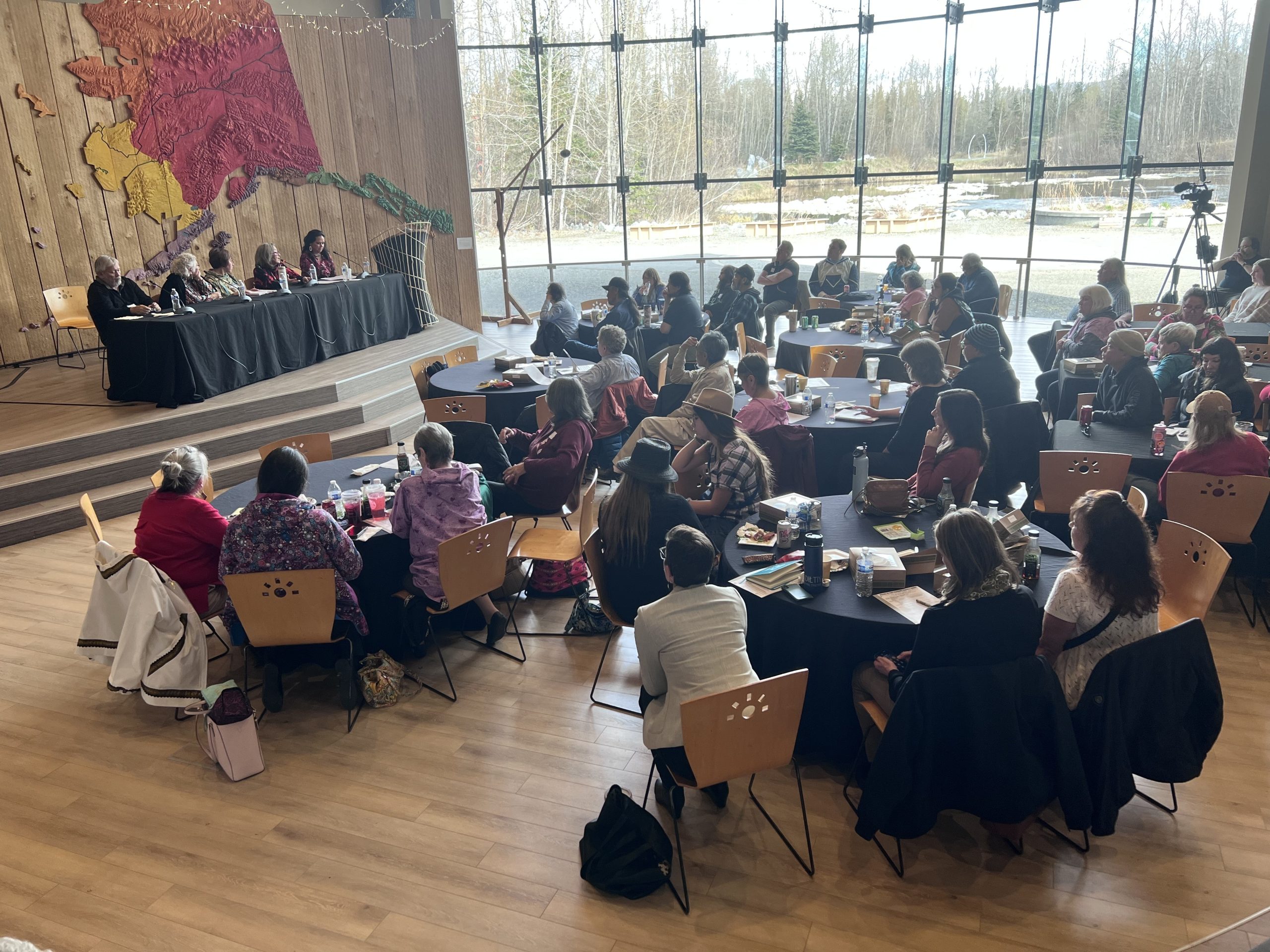
The Alaska Native Heritage Center and Koahnic Broadcast Corporation held a day-long summit on Native boarding schools on May 2 to coincide with the opening of a new exhibit that looks at how the federal government and churches teamed up to educate Alaska Native children. (Photo: Rhonda McBride)
Benjamin Jacuk, the Heritage Center’s director of Indigenous Research, is also an ordained minister and a descendant of Native boarding school students.
“Where did all this stuff come from?”
He says churches and the federal government had the same mission — to either displace or assimilate Alaska Natives.
Jacuk says the records show their motive was resource extraction.
“It’s really important to recognize that this version of Christianity was so interwoven with nationalism that you couldn’t pull apart being a quote American in terms of the way that they defined American or a Christian.”
The summit that preceded the opening of the exhibit also brought together many survivors of boarding schools, who told of harsh punishments for speaking their Native language, as well as physical and sexual abuse.
The Heritage Center says work goes on to document these stories.
Disclaimer: Koahnic Broadcast Corporation, which owns National Native News and KNBA, co-hosted the boarding school summit at the Alaska Native Heritage Center.

(Courtesy MHA Nation Tourism / Facebook)
A new grant program in North Dakota aims to help tribes promote tourism.
Mike Moen has more.
A bill recently signed by the state’s governor sets aside $100,000 for North Dakota’s five tribal nations for tourism-related projects.
Kiera Fox of the MHA Nation Tourism Department says her team can use it to improve signage and other needs, while promoting their history in a culturally appropriate way.
“We get to tell our stories with our own voices, you know, reeducate a little bit, correct some of those misconceptions everybody has about Native Americans.”
She says MHA Nation is off the beaten path. So, more visibility with signs might convince drivers to take a detour and check out sites, including a local museum and the Crow Flies scenic overlook.
The bill sailed through the Legislature with minor opposition.
However, the final sum is lower than the proposed $500,000.
Bill sponsors say the initiative benefits regional economies, with promotion from tribal and non-tribal areas working hand-in-hand.
As for Indigenous communities, Fox says having more tourists spend money locally expands their revenue base.
Get National Native News delivered to your inbox daily. Sign up for our daily newsletter today.
